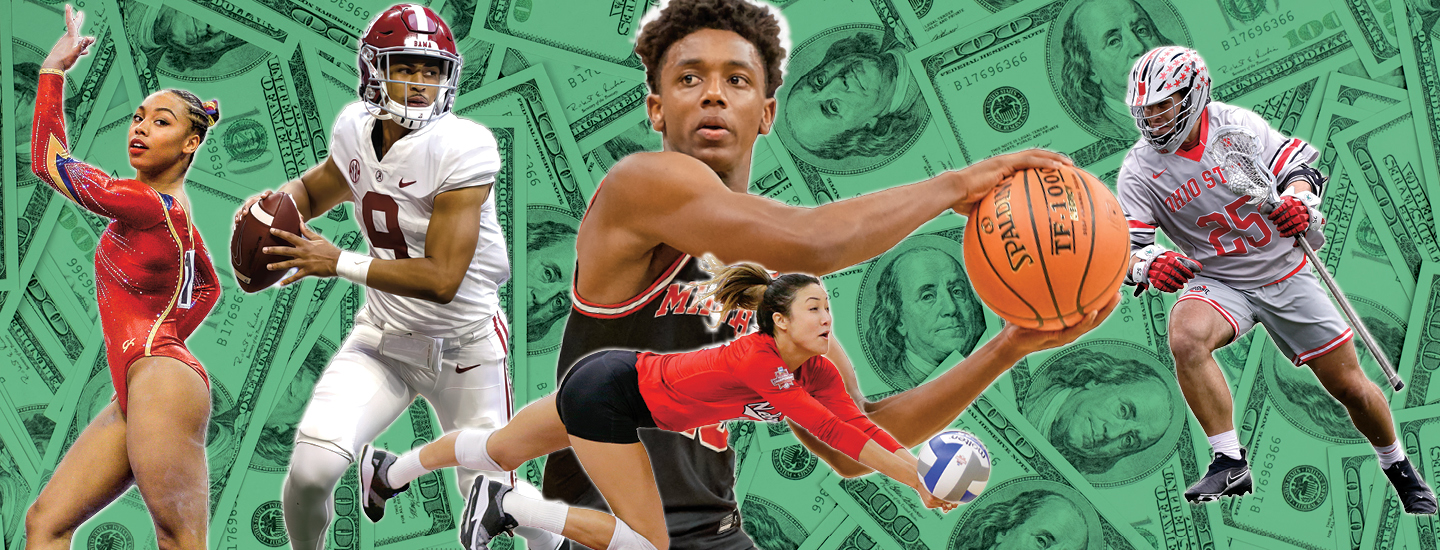Atlanta Journal-Constitution/MCT/Alamy Live News (Gurley)
Todd Gurley
In 2014, Todd Gurley played for the University of Georgia. He was the best running back in college football. On game days, more than 90,000 fans showed up to watch him plow through defenders. They paid as much as $200 for their tickets. On the way out, they bought his #3 jersey for $134.95.
The University of Georgia made more than $50 million on football that year. But when the school found out Gurley had made $400 by selling his autograph, it wasn’t happy. Gurley was suspended for four games.
Today, Gurley’s story would have a different ending. This year, college athletes are allowed to advertise products for the first time. They can sell T-shirts and hats printed with their names. They can autograph whatever they want. And they can do it all for money.
If he were a college star now, Gurley could be rich before he even entered the NFL.
In 2014, Todd Gurley played for the University of Georgia. He was the best running back in college football. More than 90,000 fans showed up to watch each of his games. Some of those fans paid $200 for their tickets. On their way out, they purchased his #3 jersey for $134.95.
That year, the University of Georgia made more than $50 million on football. But when Gurley earned $400 by selling his autograph, the school was not happy. Gurley was suspended for four games.
Today, Gurley’s story would be different. This year, college athletes can sell their autographs. They can sell T-shirts and hats printed with their names. They can advertise products too.
Imagine if Gurley were in college now. He would get rich before he even entered the NFL.
In 2014, Todd Gurley—who played for the University of Georgia—was the best running back in college football. On game days, more than 90,000 fans showed up to watch him plow through defenders. Some of those fans paid as much as $200 for their tickets. On their way out, they purchased his #3 jersey for $134.95.
The University of Georgia made more than $50 million on football that year—but when the school discovered that Gurley had earned $400 by selling his autograph, it wasn’t happy. Gurley was suspended for four games.
Today, the ending to Gurley’s story would be considerably different. This year, for the first time, college athletes are allowed to earn money by advertising products. They can sell T-shirts and hats printed with their names, and they can sell their autographs.
If this rule had been in effect when Gurley was in college, he could have been rich before he even entered the NFL.

